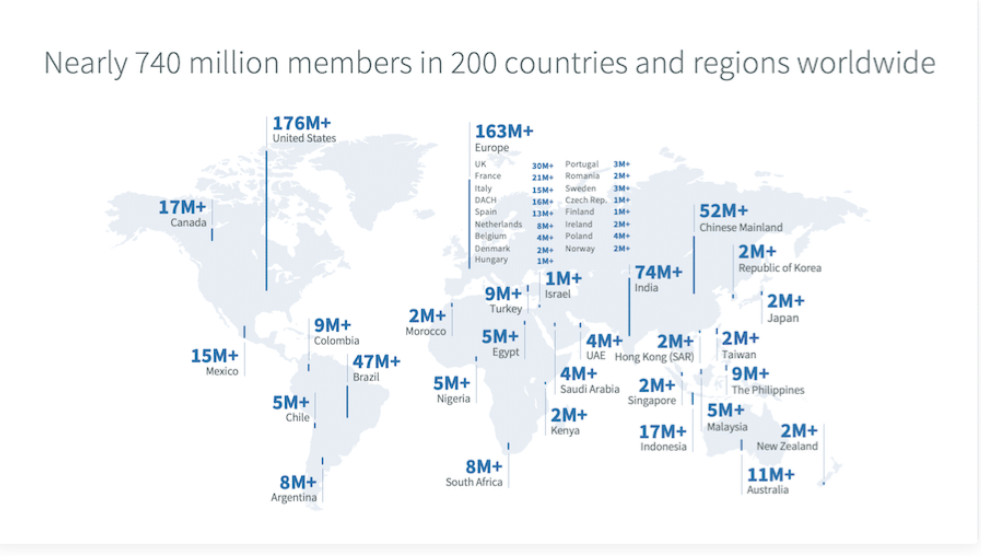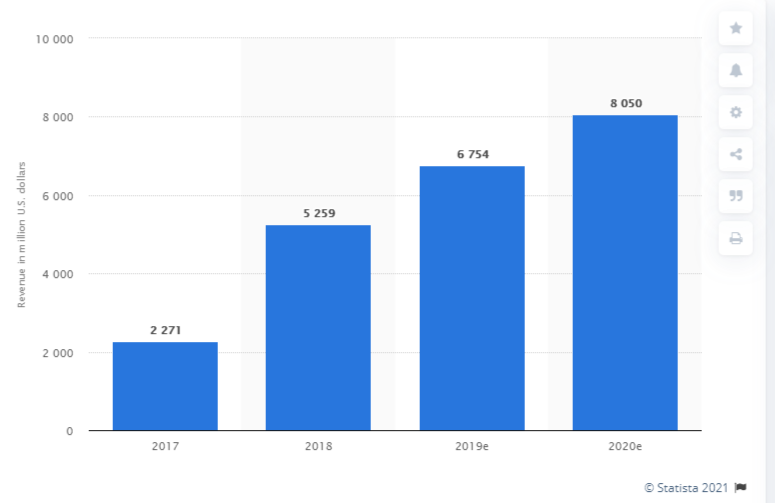Introduction
In a highly competitive business of social networking platforms, it is challenging for a company to maintain its longevity and success for a long time. However, as the trends of LinkedIn’s growth in revenue and users’ activity demonstrate, persistent leading position in the market and deliberation to competitive advantage contribute to success. The present report is designed to identify trends in LinkedIn’s revenue and analyze the attributes of its continuous growth.
LinkedIn Growth Trend Determinants
The abundance of information and statistical data available on LinkedIn allows for thorough research of the company’s development and current trends in performance. Indeed, data availability indicates that the company is transparent and driven by its mission of building meaningful connections between people (Davis et al., 2020). LinkedIn was launched in 2003 as a professional network service, steadily occupied a stable position in the market, and was acquired by Microsoft in 2013 (Tankovska, 2021a). The company has gained the number of “more than 500 million users globally in 2017,” thus becoming “the dominating professional networking social medium” (Olsson et al., 2020, p. 2). As a leading constituent of the social networking sites sphere, LinkedIn provides its users with multiple opportunities to advance their career and employment opportunities on a global scale by interacting and forming connections with professionals from all over the world. However, the rate of annual revenue growth and an increase in the number of users is the most demonstrative determinants of the growth trend of the company, which is demonstrated in the evidence section.
Evidence
Within the past four years, LinkedIn has gained unprecedented rates in revenue growth and a number of registered users. As the data on the company’s operation indicate, LinkedIn continues to attract the interest of users online, with the Google search rate having increased by over 60% within the past decade, despite the long-term existence of the organization (Osman, 2021). Overall, a vivid indicator of the growth trend is the number of registered users on the platform. As Figure 1 demonstrates, the number of users registered on LinkedIn now has reached the point of 740 million members in 200 countries of the world (Osman, 2021). Thus, such a significant number demonstrates that the company occupies a solid place in its market and has a potential for sustainable development in the future.

Despite the importance of the data indicating the number of members, the essential indicator of a company’s growth is the statistical data on its annual revenues. Indeed, LinkedIn has grown significantly between 2017 and 2020, gaining over 8 billion dollars in 2020 (Tankovska, 2021b). As Figure 2 shows, LinkedIn earned somewhat more than 2 billion dollars in 2017, after which the annual revenue rate steadily increased, reaching its highest point in 2020.

Conclusion
In summation, the provided statistical data and research results demonstrate that LinkedIn is a highly competitive growing company with a rich history of business success and global dominance of the market. In terms of its attraction of users, the trends show that the company occupies the leading position among other social networking websites. The biggest and most developed countries are leading users of the platform, which contributes to its continuous growth. The increasing number of users and their readiness to pay for premium accounts predetermines the annual revenue growth of LinkedIn, which characterizes the financial performance of the company during the past few years. The analyzed trends indicate that the company holds a stable competitive position in its market and is likely to remain a leader in the niche of professional networking in the future.
References
Davis, J., Wolff, H. G., Forret, M. L., & Sullivan, S. E. (2020). Networking via LinkedIn: An examination of usage and career benefits. Journal of Vocational Behavior, 118, 1-15.
Olsson, A. L., Snellman, M., Deppert, K., & Lövkrona, I. (2020). Professional networking by gender: A case study on LinkedIn contacts for a professor in science.Center for Open Science. Web.
Osman, M. (2020). Mind-blowing LinkedIn statistics and facts (2021). Kinsta. Web.
Tankovska, H. (2021a). Leading countries based on LinkedIn audience size as of January 2021(in millions). Statista. Web.
Tankovska, H. (2021b). LinkedIn: Annual revenue 2017-2020. Statista. Web.